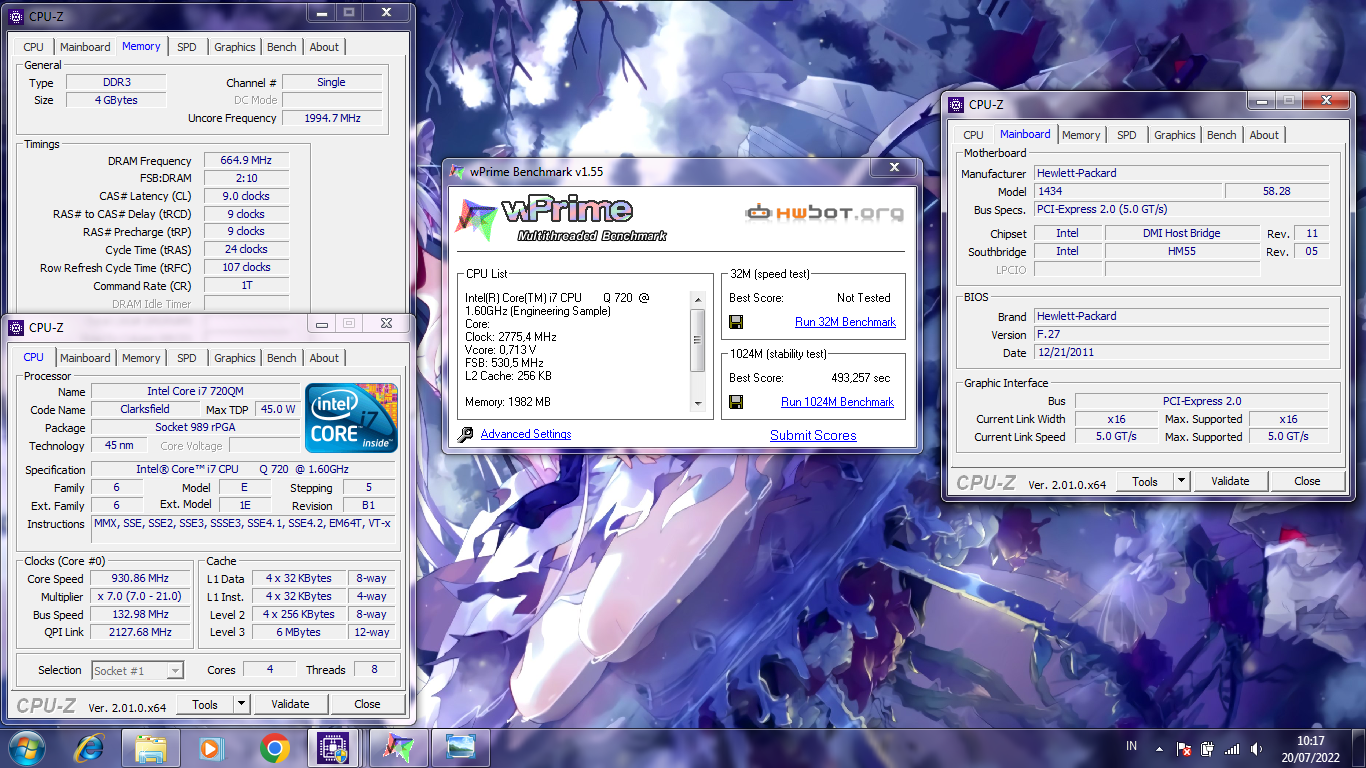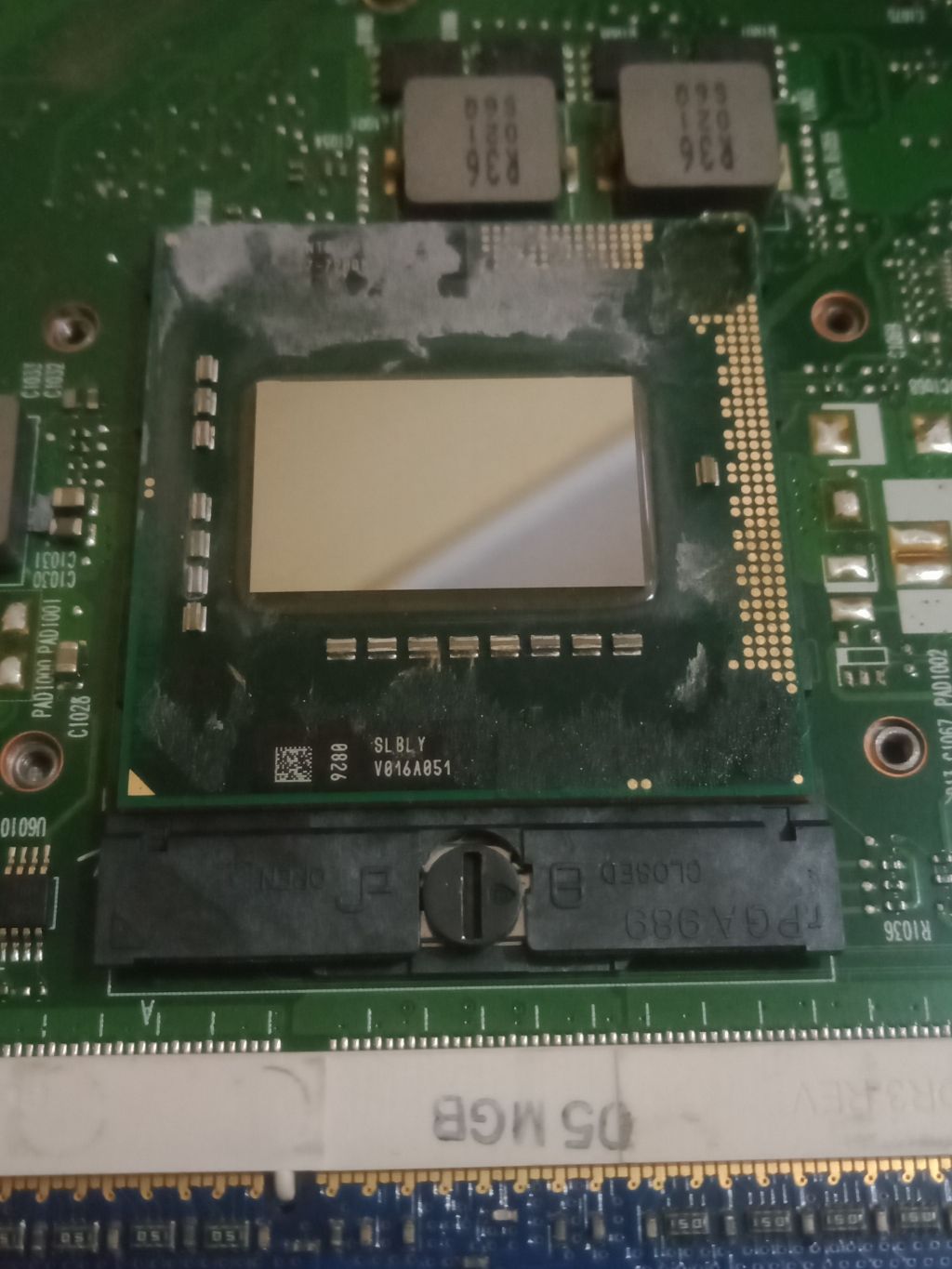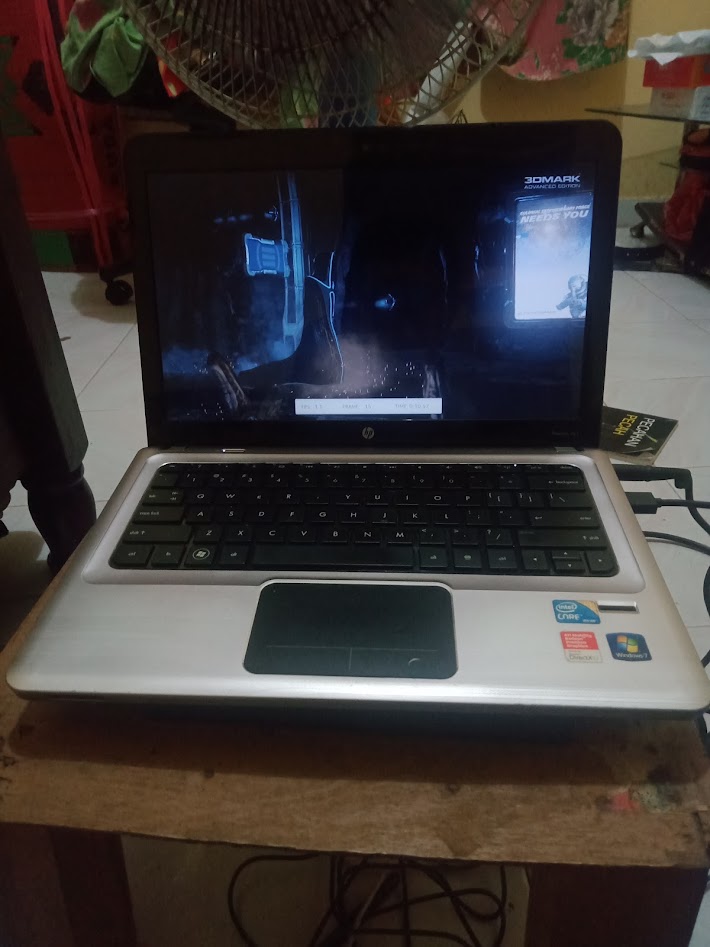Submission Detail
Thursday, 01 January 1970 07:00 | Update at null
Media Gallery
Screenshot

Device, Setup, etc



URL
https://hwbot.org/submission/5044483https://www.facebook.com/hakimnu.id/posts/3338180336414606
Information Detail
Hardware: Intel Core i7 720QM
Specs:CPUID : Intel(R) Core(TM) i7 CPU Q 720 @ 1.60GHz
Architecture : x86
Codename : Clarksfield
L3 Cache : 6MB
Clock : 1.60GHz - 2.80GHz
Core/Thread : 4/8
TDP : 45W
Technology : 45nm
Socket : PGA988
IGPU : -
See more specification...
Software: wPrime - 1024M
Score: 8min 13sec 257ms
About: wPrime - 1024MwPrime - 1024M is a compute-intensive benchmark used to measure processor performance and scalability by calculating all prime numbers up to 1024 million (1,024,000,000). The test is designed to fully tax the CPU and memory system in a heavily multi-threaded work scenario, utilizing all available cores and threads. As the workload size is much larger than wPrime 32M, this benchmark tests not only processor speed, but also system stability under long-term load. The results are reported in execution time (in seconds), where a smaller number indicates better performance. wPrime - 1024M is often used in overclocking competitions, CPU stress tests, and performance evaluation of servers or workstations under extreme parallel computing loads.
Released in 2009 as part of the Clarksfield (Nehalem) architecture, the Intel Core i7-720QM is a high-end mobile processor aimed at gaming laptops and workstations. It has 4 cores and 8 threads, with a base clock speed of 1.6 GHz, which can increase to 2.8 GHz using Intel Turbo Boost.
With 45nm fabrication, this processor has a TDP of 45W, which is quite high for laptop standards. Because it uses Hyper-Threading, it can handle eight threads simultaneously, improving performance in multi-threaded applications such as video rendering and editing.
In terms of graphics, the i7-720QM does not have an integrated GPU, so laptops using it must have a discrete graphics card for display output.
Compared to modern processors, the i7-720QM's performance is quite behind, especially in power efficiency. However, for legacy systems still using this processor, its performance is still sufficient for basic tasks and some heavy applications with proper optimization.
Hardware Detail
Device: SAMSUNG 300E4Z
RAM: 4GB DDR3
OS: Windows 7
* Notes:
